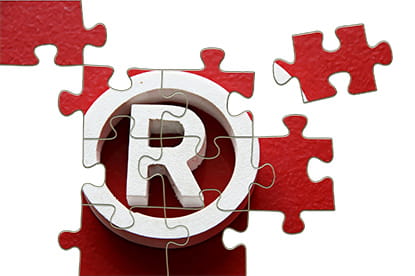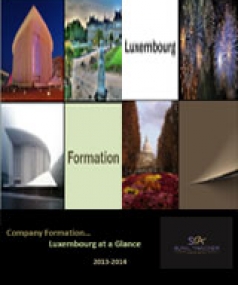FAQs - Trademark Registration in Israel
 Q1. Who is eligible to apply for registration?
Q1. Who is eligible to apply for registration?
A trademark registration application may be filed by any person or legal entity. There is no requirement for citizenship or residency.
Q2. What can be protected and registered as a trademark, and what can't?
Any logo that can differentiate the trademark owner's products and services from those of others can be registered. A ‘mark' is described as ‘letters, numerals, words, pictures, or other signs, in two or three dimensions, or variations thereof.' The following items are included in this expansive and versatile definition:
- Logos and phrase marks;
- Color marks (i.e., marks with just one or more colors and no wording or design);
- Shapes of products and packaging, as well as 3D trademarks;
- Points that make a sequence of movements are known as motion marks.
- holographic inscriptions; and
- Sound marks.
As of now, no smell or taste marks have been detected. Registration is also possible for service, certification, and collective markings.
Q3. Is it possible to secure trademark rights without registering them?
Under the tort of passing off, trademark rights may be created without registering, relying on local goodwill. In most cases, long and significant use in Israel is needed to build some local goodwill, but in exceptional cases, use abroad can suffice.
Q4. Is a well-known international trademark protected even though it isn't used domestically? If that's the case, does the international trademark have to be well-known domestically? What kind of evidence is needed? What kind of security is provided?
And if not used domestically, an international trademark that is well-known there is covered. If a mark is not licensed in Israel, it is protected from the use and registration of a confusingly identical mark for the same or similar products or services. If a mark is licensed in Israel, it is protected from the usage and registration of a similar mark for products that are not of the same description, given that such use could lead the public to suspect that there is a link between the goods or services in question and the owner of the registered trademark, and that the owner could suffer harm as a result of such use.
Q5. What are the advantages of registration?
In Israel, trademark registration has a range of advantages, including:
- a license to use the trademark solely in Israeli territory;
- a legitimate assumption of possession and right;
- a right to sue for trademark violation under the Trademark Ordinance (New Version) of 1972;
- availability of a border control system that allows Customs to detain alleged infringing goods;
- a prospect of filing a counterfeiting lawsuit with the police; and
- Well-known trademarks have been given additional rights.
Q6. What types of documents are needed to file a trademark application? What are the laws that control how the mark is represented in the application? Is it possible to file documents electronically? Is it possible to conduct a trademark check before filing a trademark application, or is it required? If so, what are the processes and costs?
To file a trademark claim, the claimant must apply a power of attorney on behalf of the applicant and in favor of the attorney submitting the application to the Israel Patent Office. A qualified officer of the claimant organization must sign the form, and a scanned copy of the executed document must be forwarded. The original must be made available to the registrar upon request. The paperwork does not need to be notarized.
When claiming traditional preference under the Paris Convention on the basis of a corresponding foreign application, the claimant must have an authorized copy of the corresponding foreign application as well as an English translation. Within three months of the application's filing date, all applications must be sent to the Israel Patent Office (a deadline which may be extended).
 A specimen in JPG format is required for device or stylized label registrations, whereas a specimen in MP3 format is required for sound mark registrations. There is an option to file electronically. It is required of companies and trademark attorneys who file on behalf of others (ie, lawyers or patent attorneys).
A specimen in JPG format is required for device or stylized label registrations, whereas a specimen in MP3 format is required for sound mark registrations. There is an option to file electronically. It is required of companies and trademark attorneys who file on behalf of others (ie, lawyers or patent attorneys).
Until filing, you should conduct an official trademark availability check.
Just one foreign class is covered by an official trademark similarity quest. The official search fee is NIS647 (roughly $180 depending on the exchange rate).
The Israel Patent Office automatically applies searches to additional related classes; but, based on the identified products or services offered with the search request, they are not all entirely protected. A system label quest is limited to one class. The price is the same as before.
Q7. How long does it usually take to secure a trademark license, and how much does it cost? When does registration become formally effective? What factors will cause the time and expense of filing a trademark application and obtaining a registration to increase?
Applications are normally reviewed 10 to 12 months after filing, according to current review rates at the Israel Patent Office.
The official price for registering a trademark or service mark is NIS1,623 (approximately $450, depending on the exchange rate).
The filing date is called the real date for the rights to a mark that has been registered for registration or used. Marks come into effect on the date of their registration (i.e., at the close of the opposition era, including resolving all opposition); therefore, the filing date is considered the relevant date for the rights to a mark that has been filed for registration or used.
On receipt of a supporting affidavit detailing the reasons for the appeal, an accelerated investigation is possible under specific cases (e.g., an existing or imminent infringement). Within one month after receiving such a letter, an accelerated review is expected to take place. For rapid examinations, the official fee is about $265. (Depending on the exchange rate).
Q8. Whose classification scheme is used, and how does it vary from the International Classification System in terms of claimable goods and services? Is it possible to use multi-class applications, and what are the estimated cost savings?
The International Classification system's 11th edition (2019) is included.
There are multi-class applications available. The below are the official fees for filing multi-class patent or service mark applications:
- First class costs NIS1, 623 (approximately $450); and second class costs NIS1, 623 (approximately $450).
- Every additional class filed concurrently for the same mark costs NIS1, 219 (approximately $340, depending on the exchange rate).
Q9. When deciding whether or not to issue a trademark license, what protocol does the trademark office use? Are patent applications reviewed for future trademark conflicts? Is it possible to overcome an objection based on a third-party label with a letter of consent? Is it possible for applicants to respond to trademark office rejections?
Trademark proposals are scrutinized from both a scientific and substantive standpoint. Both absolute and relative grounds are examined in a thorough investigation.
When reviewing technical aspects, the examiner ensures that all technical conditions, such as filing a power of attorney and paying extra fees, have been met.
The examiner then looks at the grammar of the product or service description (for clarification, non-ambiguity, and generalizations, for example) and the designation. The inspector may warrant a change in classification or the addition of classes to the application if the description of goods or services seems to include classes other than those originally requested.
The Israel Patent Office then reviews the label on both relative and absolute grounds (for example, possible contradictions with previous registrations and applications).
Although letters of consent may assist in overturning an initial rejection based on a cited mark, the examiner is not obligated to cancel a citation simply because a letter of consent is sent.
Applicants or their affiliates (for example, trademark and patent attorneys) have three months to respond to trademark office rejections (extendable).
Q10. Is it necessary to assert use of a trademark or service mark before registration is authorized or issued? Is it necessary to apply evidence of use? Are priority privileges given to international registrations? Is there a point at which registration must continue to be used in order to keep the registration or to overcome a third-party challenge based on non-use?
 There is no need for a licensed trademark owner to include evidence of use in Israel prior to or after registration. Furthermore, the registrar is not required to provide evidence of a trademark's use on its own initiative under Israeli trademark law.
There is no need for a licensed trademark owner to include evidence of use in Israel prior to or after registration. Furthermore, the registrar is not required to provide evidence of a trademark's use on its own initiative under Israeli trademark law.
However, if a label is not used for three years after it is registered, it becomes vulnerable to cancellation on the basis of non-use at the behest of an involved party. In this case, evidence of use must be submitted to defend the registration.
Q11. What words or phrases should be used to show that a trademark is in use or has been registered? Is it necessary to mark? What are the advantages of using certain terms or symbols, as well as the disadvantages of not doing so?
To denote trademark use or registration, the symbols TM and ® may be used. It is not enough to label something. It is illegal to falsely claim that a product is protected by trademark registration (for example, by using the ® symbol or implying "Registered Trademark"). Section 3 of the Product Marking Ordinance provides that someone who assigns a misleading commercial definition to a product or sells or offers certain products faces sanctions (including fines and even imprisonment) unless they can demonstrate that they did so without intending to mislead. While no court trials have used this clause, in general, circumstances like this (i.e., wrongly indicating trademark registration) can be used in civil litigation to prove bad faith (eg, denying a party equitable relief).
Q12. Is there a way to appeal if my submission is rejected?
When your claim is rejected, you have the right to appeal:
- An applicant has three months to appeal an examiner's original rejection (extendable up to 11 months, or longer under special circumstances).
- A hearing before the registrar can be requested by the claimant.
- Within 30 days, the registrar's ruling can be appealed to a district court.
- Within 30 days, the claimant will file a motion to challenge a district court ruling to the Supreme Court.
Q13. Is it possible to object to an application? Is it possible for a third party to object to a trademark or service mark application before it is registered, or to request cancellation of a trademark or service mark after it has been registered? What are the main causes of those problems, and what are the methods for dealing with them? Is it possible for a brand owner to fight a bad-faith application for its label in a jurisdiction where it is not protected? What is the standard cost spectrum for a third-party resistance or cancellation action?
Trademark applications are released for a three-month opposition period within which a third party can file an absolute or relative opposition. Descriptiveness, marks that are detrimental to public policy, misleading marks, and marks that encourage unfair competition are all absolute grounds. Relative grounds include trademarks that infringe on third-party property rights and applications that are identical or equivalent to the company name of another party.
Within five years of the date of trademark registration, third parties can revoke registered trademarks on the same absolute and relative grounds as oppositions. A cancellation suit against a trademark license on the basis that it was brought in poor faith has no time limit.
A third reason for a trademark's exclusion from the register is that the logo has not been used in the three years prior to the petition for removal.
The following items are used in both opposition and cancellation proceedings:
- Detailed statements must be submitted;
- Affidavits are used to provide evidence.
- A hearing before the registrar for cross-examination; and
- Summaries in writing
The filing of challenge or cancellation proceedings is not contingent on the approval of a trademark. Brand owners will challenge trademark applications and registrations based on common law protection gained by trademark use as well as foreign goodwill.
The costs of a third-party opposition or cancellation proceeding can vary depending on the facts of the situation.
Q14. What are the requirements for maintaining a registration and how long does it last? Is it necessary to use the trademark in order to keep it up to date? If that's the case, what kind of evidence of use is required?
A trademark registration will last an indefinite amount of time if it is renewed every ten years since it is first filed. Renewal is only possible if you order it and pay the following fees:
- For single-class registrations, the renewal fee is $805; and
- For multi-class registrations, the first class costs $805, and each additional class costs $680.
There is a six-month grace period after the expiration date within which a registration can be extended, subject to payment of late renewal fees. If a mark is not replaced by the due date or during the six-month grace period (with the payment of late renewal fees), it is withdrawn from the register and cannot be renewed again. It is possible to order its reinstatement at any point by filing an appropriate affidavit, but this must be done within six months. In other words, if more than a year has expired after the renewal date, a lapsed registration cannot be renewed or reinstated.
Furthermore, the canceled registration is considered valid for a further six months and, as a result, may be used to support a new application.
Q15. What is the process for giving up a trademark registration?
Through filing an appeal with the Israel Patent Office, the holders of a trademark register may voluntarily surrender it.
It is not advisable to unilaterally forfeit a registered trademark during cancellation or other contentious litigation, since the trademark owner fears being forced to compensate the applicant's cancellation expenses. In such cases, the parties should file a joint note with the Israel Patent Office demanding the cancellation of the registration and the cessation of the litigation without a costs order.
Q16. Will trademarks be covered by other intellectual property rights (e.g., copyright and designs)?
Some IP privileges, such as copyrights and architectural designs, are not affected by trademark registration.
Q17. What legal framework regulates the online enforcement of trademarks and domain names?
Infringement occurs when a domain name or trademark is used digitally that is identical or confusingly similar to a registered trademark or an unregistered well-known trademark. Furthermore, the owners of unregistered trademarks (i.e., brand owners who acquired common law trademark rights and goodwill through the use of a trademark) have the right to enforce their rights against the unauthorized use of trademarks online or domain names that are identical or confusingly similar under unfair competition laws (e.g., passing off), as well as unfair interference with access to a trader’s business under Sections 1 and 3 of the Commercial Civil Wrongs Law 1999, respectively.
For conflicts involving the issuance of domain names under the ‘.IL' country code top-level domain filed or used in bad faith, including disputes including domain names that are identical or confusingly close to licensed or unregistered trademarks, the Israel Internet Association has an expedited mechanism for resolution.
 English
English
 عربي
عربي Русский
Русский 官话
官话 português
português
 Türk
Türk 























